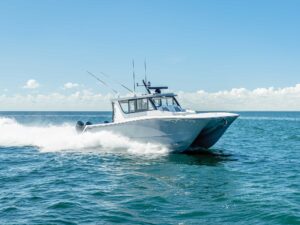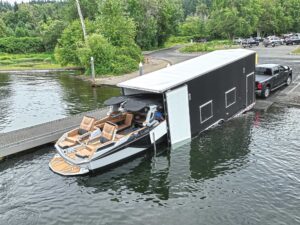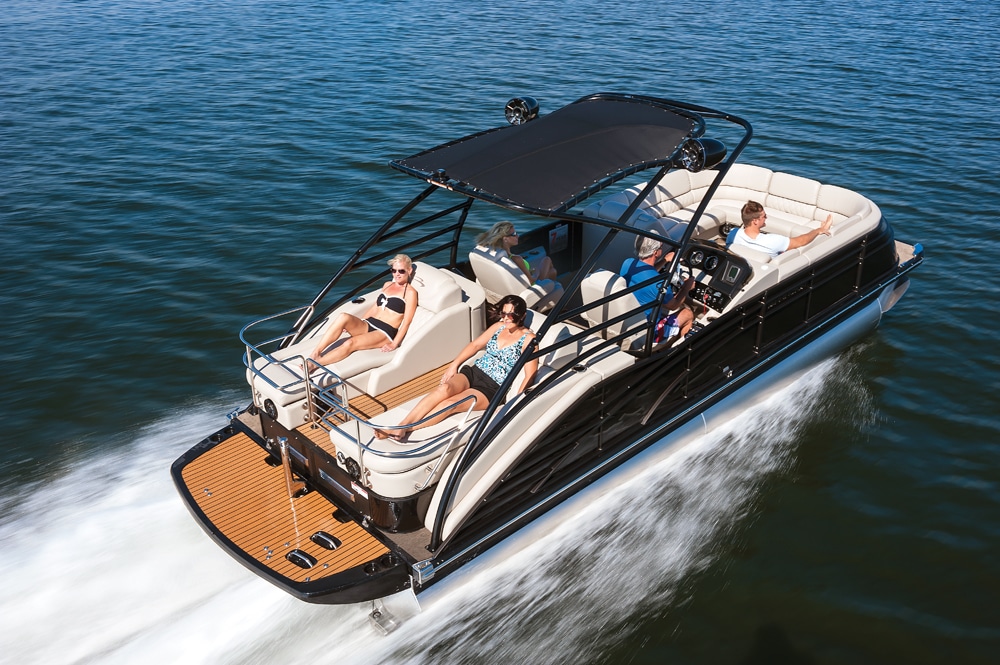
Pontoon Boat Power: Sterndrive vs Outboard
We sat aboard the sleek black boat and listened to the rumbling 430 hp MerCruiser 8.2L HO engine under the hatch. We flipped on the Captain’s Call and amplified the exhaust to create a sound loved by performance boaters throughout the world. We throttled up and felt the engine rev as we sprinted across the water at over 50 mph. Were we on an offshore performance boat? Nope, a Bennington 2575 QCW I/O Sport Tower. That’s right, a pontoon.
You may be reading this and saying, huh? Based on common perceptions of pontoons as boxy, slow-moving entertainment platforms, the earlier scenario doesn’t make sense. Neither, to most, does the idea of powering pontoon boats with sterndrives. Outboards have long been the ’toon power of choice because of their superior power-to-weight ratios that match well with lightweight aluminum hulls. And they can be mounted all the way aft, freeing up deck space that is a pontoon staple.
It seems like every day, though, that pontoons are becoming more performance-oriented, adding third tubes and bigger power packages to propel them to ever-faster speeds. As some ’toon builders are adding performance strakes and rigging boats with 350 hp outboards, adding a sterndrive into the mix doesn’t seem far-fetched. Builders such as PlayCraft, Tahoe and Avalon also offer sterndrive-powered pontoons.
What are the pros and cons of equipping a pontoon with a sterndrive versus an outboard? We compared the performance of a 2575 QCW I/O Sport Tower to a QCW powered by a Yamaha F350. Here’s a look at what we found.
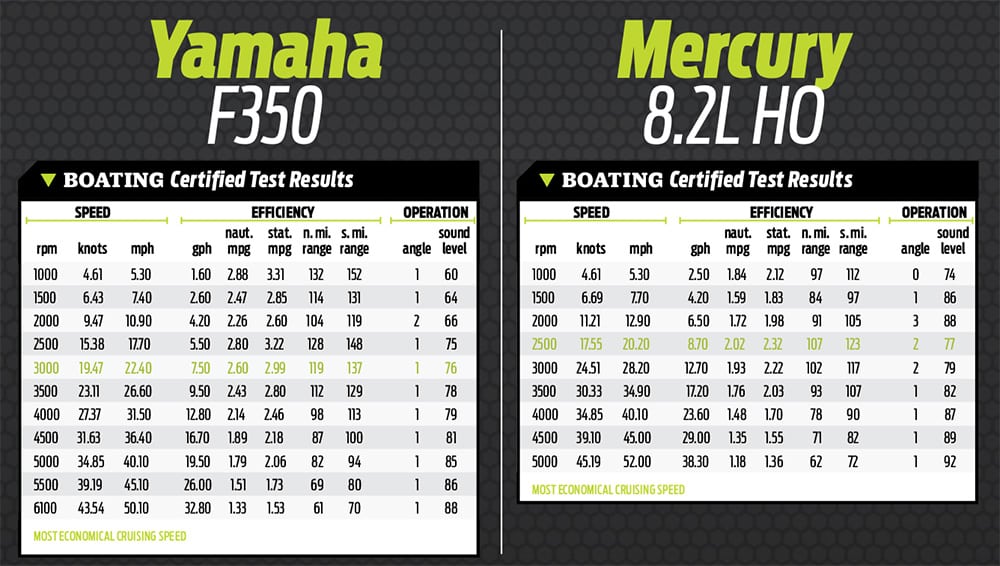
Pontoon Boat Power: Sterndrive vs Outboard
Peak Efficiency: 2.99 mpg at 22.4 mph
Max Fuel Burn: 32.8 gph at 6,100 rpm Mercury 8.2L HO
Peak Efficiency: 2.32 mpg at 20 mph
Max Fuel Burn: 38.3 gph at 5,000 rpm Boating Magazine
Performance
When you look at the performance charts, you might notice that the sterndrive boat is only about 2 mph faster at top end. Why, you might ask, even bother with a sterndrive? Looking only at the numbers is like looking at the box score of a baseball game in the paper and trying to determine who made the biggest plays. Sometimes it’s all about the eye test or, in this case, the feel test.
Throttling up the 8.2-liter big block just feels different. With the digital throttle and shift (DTS) controls, we enjoyed smooth acceleration to 30 mph and then wide-open throttle, with the feeling that there was plenty of power left over in reserve. What’s that all about?
“There’s no replacement for displacement,” said Facundo Onni, the category director for Mercury outboards and MerCruiser sterndrives. “Pontoons have grown in size, weight and amenities; sterndrives pick up where the outboards leave off.”
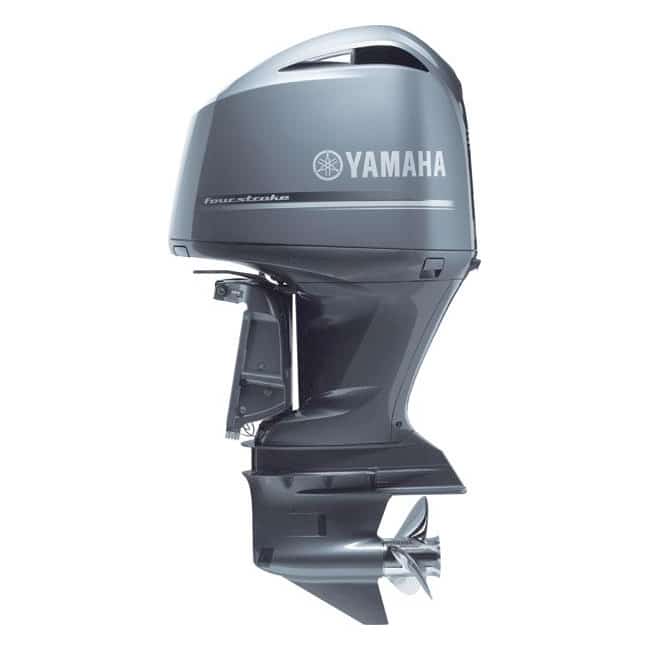
Pontoon Boat Power: Sterndrive vs Outboard
Top Speed: 50.1 mph
0 to 30 mph: 6.2 seconds
Weight: 780 pounds
Horsepower: 350
Power-to-Weight Ratio: 0.44
Displacement: 5.3L (325.3 cid)
Price: $86,483
Gear Ratio: 1.73:1
Prop Diameter: 15″ Yamaha
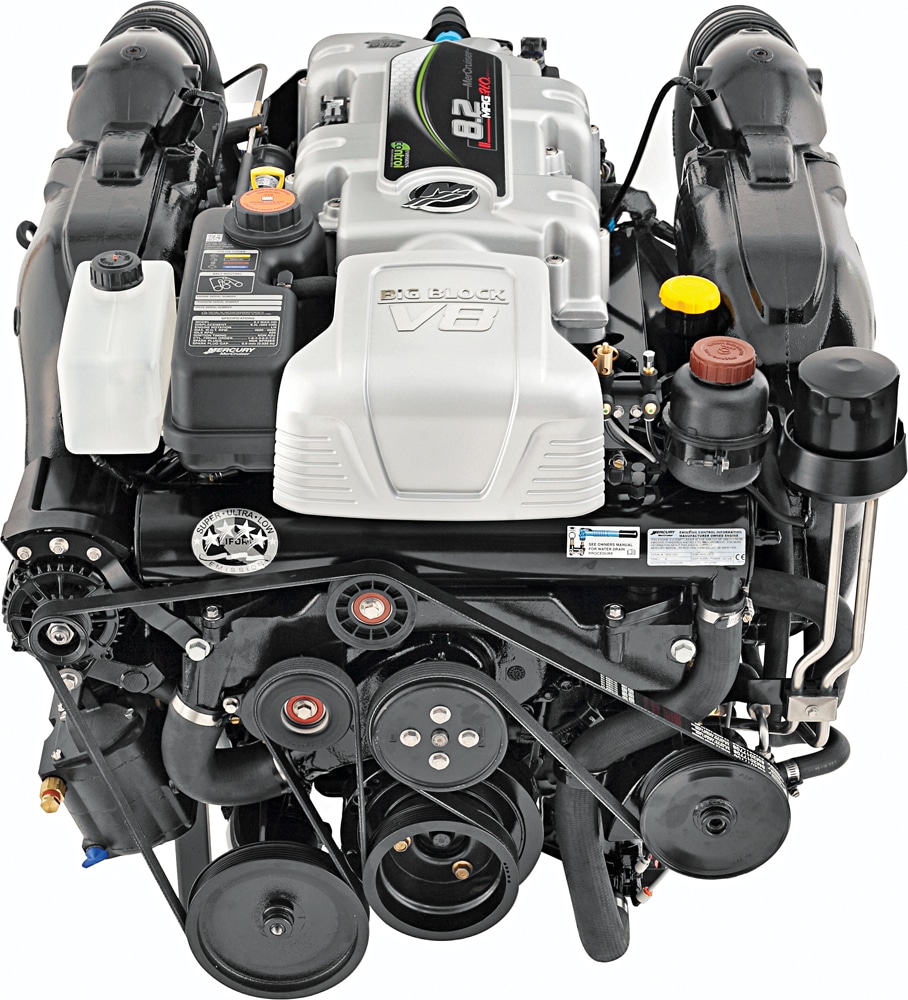
Pontoon Boat Power: Sterndrive vs Outboard
Top Speed: 52 mph
0 to 30 mph: 8.0 seconds
Weight: 1,228 pounds
Horsepower: 430
Power-to-Weight Ratio: 0.34
Displacement: 8.2L (550.39 cid)
Price: $112,563
Gear Ratio: 2.00:1
Prop Diameter: 24″ Mercury
The MerCruiser 8.2L HO is a big-block V-8 with torque to spare. The Bravo Three sterndrive serves to transfer all that horsepower and torque to the water in a very efficient manner. There are plenty of pontoon aficionados who crave that.
“There is definitely a market for inboard-outboard pontoons,” said Trent Eekhoff, the design director for Bennington Pontoons. “The sterndrive setup is perfect for water sports.” But it’s more than that.
Some of it has to do with more boaters switching from fiberglass runabouts and cruisers over to the world of aluminum pontoons. Those boaters find the sterndrive more intuitive. It’s what they know and like. And don’t forget the sex appeal.
Eekhoff helped design the 2575 QCW I/O Sport Tower we tested, with its compelling layout and optional “Black Out” styling that gives it a hologram look that would fit in with the poker-run crowd.
When we cut the wheel hard over at 30 mph, the sterndrive application really shined. This is not standard practice on a pontoon boat, because most experience a slight outward lean in turns that can be unnerving for the driver.
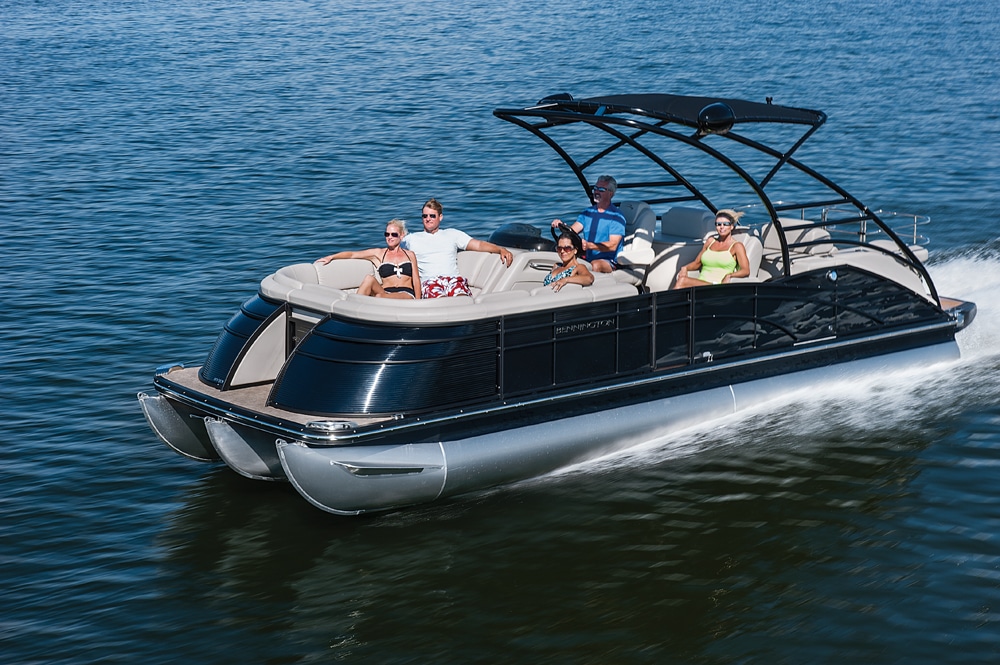
Pontoon Boat Power: Sterndrive vs Outboard
The triple tube arrangement helps create inboard lean, particularly with Bennington’s Elliptical Sport Package (ESP), which features 25-inch-diameter circular outer tubes with performance foils and a 32-inch-diameter elliptical center tube with lifting strakes. ESP replicates monohull characteristics. But the Bravo Three spinning a dual propset provides the additional bite in the water to make the triple-tube package incredibly nimble. We could carve lock-to-lock turns while still maintaining speed and change direction with S-curves without tripping the boat. We’ve seen this same handling advantage when comparing sterndrive and outboard runabouts as well.
“The dual propellers and larger blade area prevent the props from slipping or blowing out,” Onni said. “They improve maneuverability at all speeds, and that’s not exclusive to pontoons.”
For tubing and boarding, that’s a huge advantage, and that extra power reduces lag time while pulling a skier out of the water, allowing for smoother starts.
The counter-rotating dual propellers also help immensely when docking. Pontoons, with their aluminum fencing and high profiles, are susceptible to wind and can be beasts to dock with outboards, which have smaller propellers and directional torque issues that make them less responsive in reverse. Not so with large-diameter dual propellers.
“The rotational forces generated by one propeller get compensated for by the other one,” Onni said. “They neutralize each other, which allows the boat to follow the course of the drive.”
We experienced all of this firsthand with the Bennington and turned a few heads on the lake in the process.
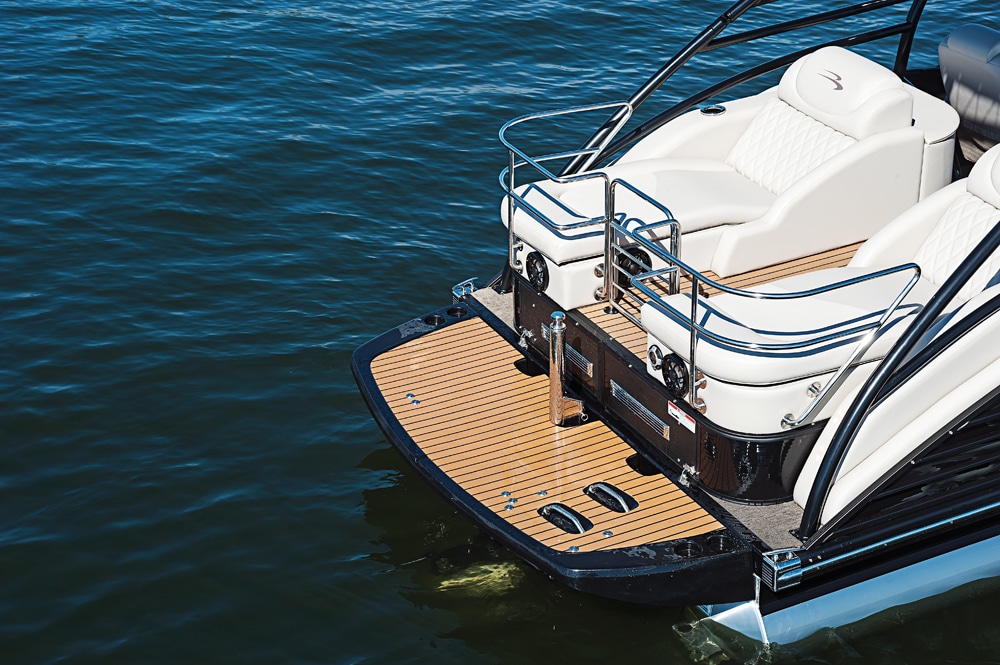
Pontoon Boat Power: Sterndrive vs Outboard
Installation
Outboards are extremely popular for their ease of service and also their power-to-weight ratio, which allow a builder like Bennington to stick 350 hp on the transom while adding only 780 pounds. The MerCruiser 8.2L weighs 1,080 pounds; adding the Bravo Three drive brings the weight to 1,228 pounds. (For a more apples-to-apples comparison, a 5.7-liter MerCruiser 350 Mag weighs 946 pounds without the drive.) You might say that the Merc has 80 additional horsepower, but consider that the 380 hp 8.2-liter weighs the same as the 430, so it’s more weight with just 30 extra horses and the comparison becomes closer. That’s a distinct weight advantage for the outboard. For techies, the outboard delivers a nearly 30 percent better horsepower-to-weight ratio at 0.44, while the sterndrive delivers a 0.34 ratio. The caveat here?
“Pontoons seem to handle weight better than other hulls,” said MerCruiser’s Onni. “They can take it.”
Still, installing a sterndrive onto a pontoon presents its own challenges. Sterndrives make little sense without the center-tube installation. But with a center tube or pod, the engine can be mounted below the deck. MerCruiser works with boat companies, particularly pontoon builders more familiar with boats designed for outboards, to make sure they meet design standards and provide easy maintenance access.
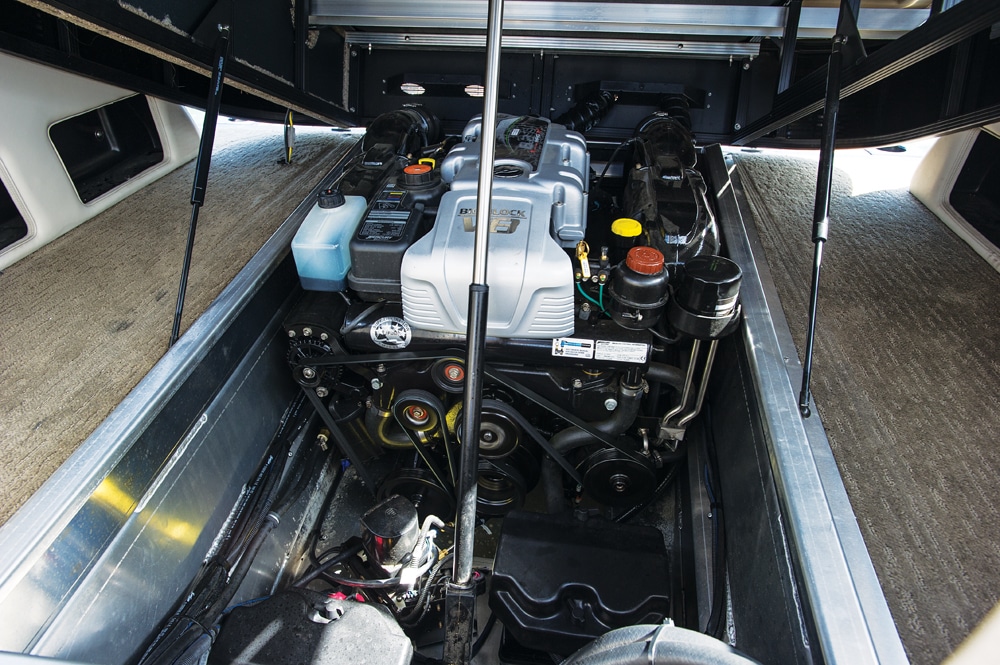
Pontoon Boat Power: Sterndrive vs Outboard
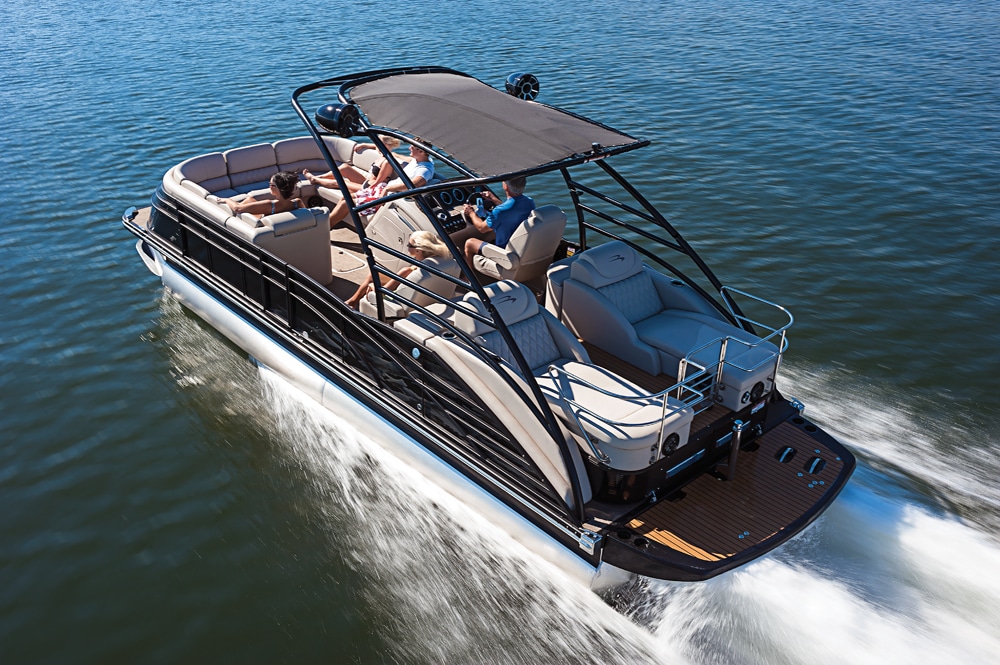
Pontoon Boat Power: Sterndrive vs Outboard
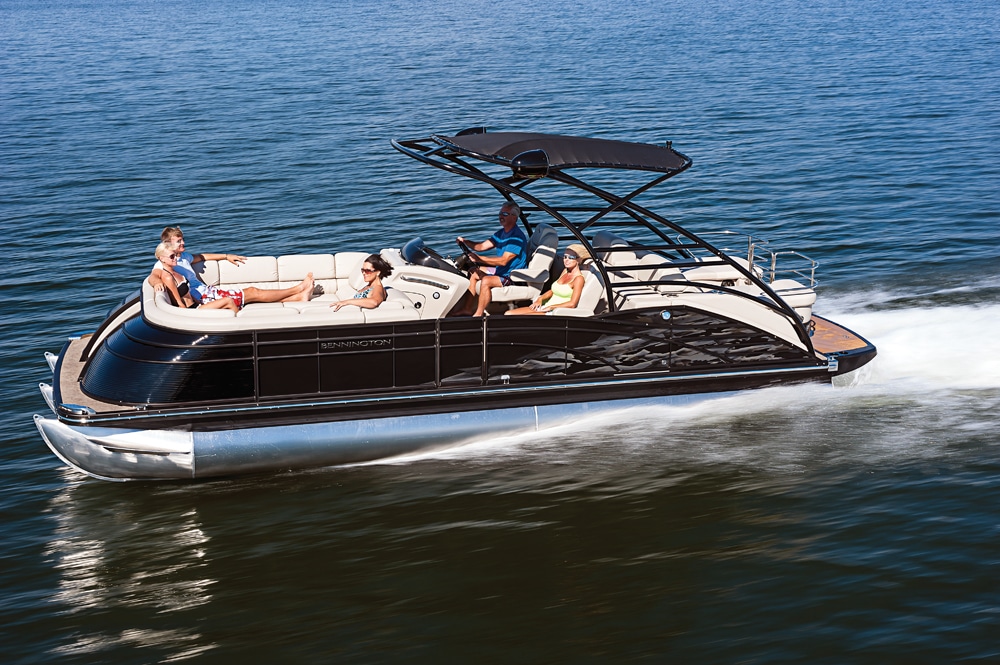
Pontoon Boat Power: Sterndrive vs Outboard
A sterndrive definitely changes the way a pontoon’s floor plan is configured. Bennington raised the deck and lowered the furniture to hide the sterndrive in its floor plan and maintain a sleek profile. It also shifted weight around in the floor plan to keep the boat’s center of gravity in its sweet spot.
But the extra torque and horsepower afforded by the 8.2-liter also help with adding amenities such as the sport tower and rear-facing lounges and extended swim platform. The larger-diameter tubes, particularly the 32-inch center tube, help defray the additional weight and retain the boat’s inherent buoyancy.
Don’t expect pontoon builders to drop the outboard in favor of sterndrives in major numbers any time soon. The outboard is, after all, the bread-and-butter engine that suits most pontoon builds just fine. But as pontoons grow larger and have more performance demands placed upon them, expect to see more boats like the Bennington 2575 QCW I/O Sport Tower cruising past you on the water, going head to head with their fiberglass counterparts.
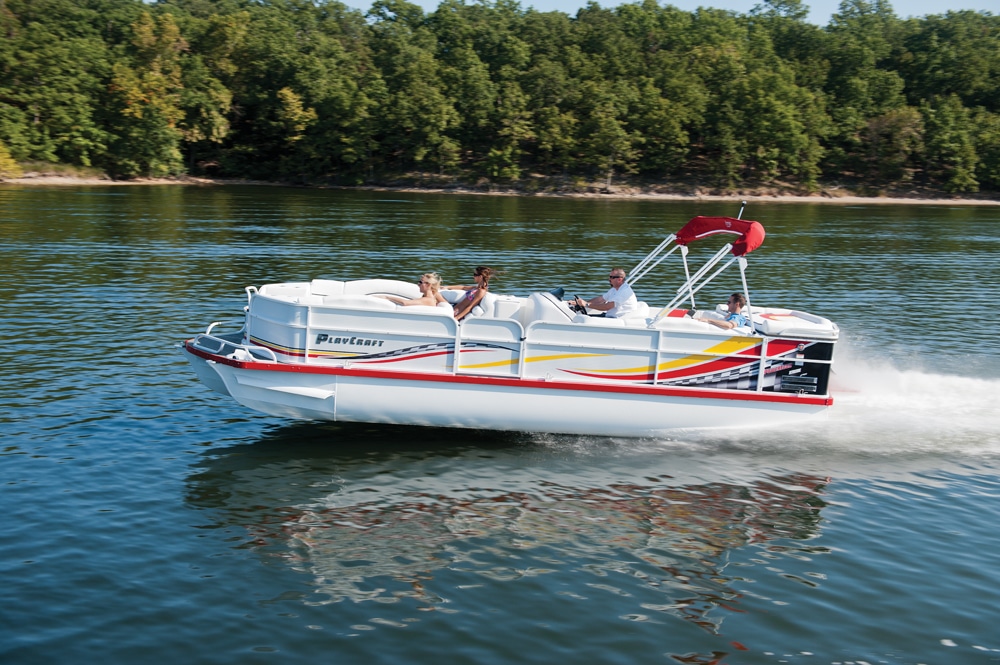
Three Sterndrive Pontoons
PlayCraft prides itself on building fast pontoons; in 2010 a 2700 Xtreme with 1,200 hp broke 100 mph, setting a pontoon record. With the 430 hp MerCruiser 8.2L HO, this ‘toon touched 56 mph with our testers at the wheel. It’s a triple-tube boat with performance strakes. playcraftboats.com Bill Doster
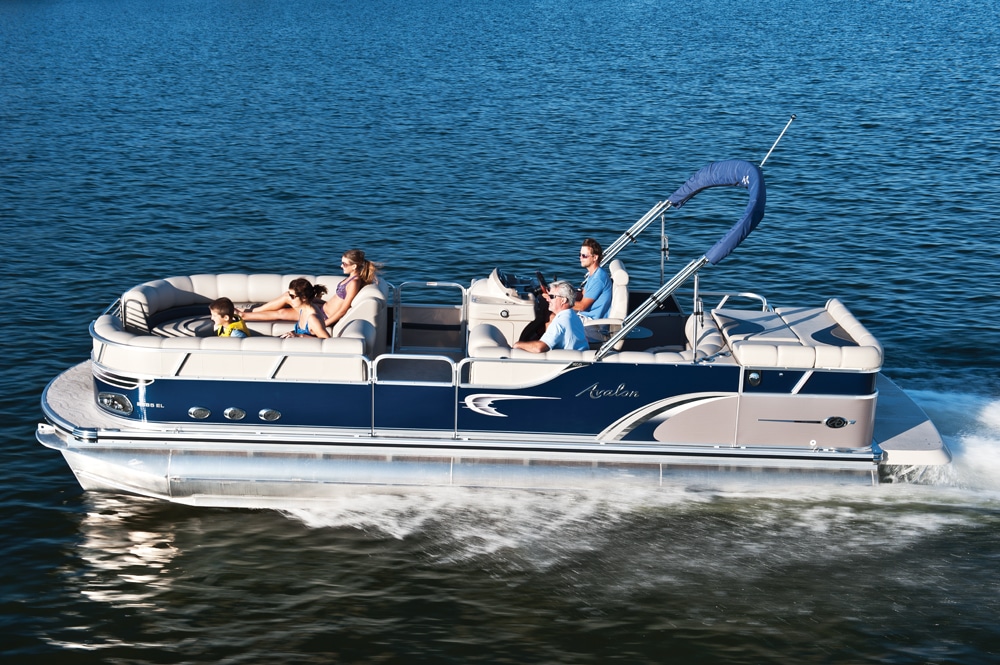
Three Sterndrive Pontoons
With a 300 hp MerCruiser 350 Mag engine we pushed this boat to 40 mph. The Elite series features three 25-inch pontoons with high-performance lifting strakes and Corsa Captain’s Choice exhaust. avalonpontoons.com Doug Dukane
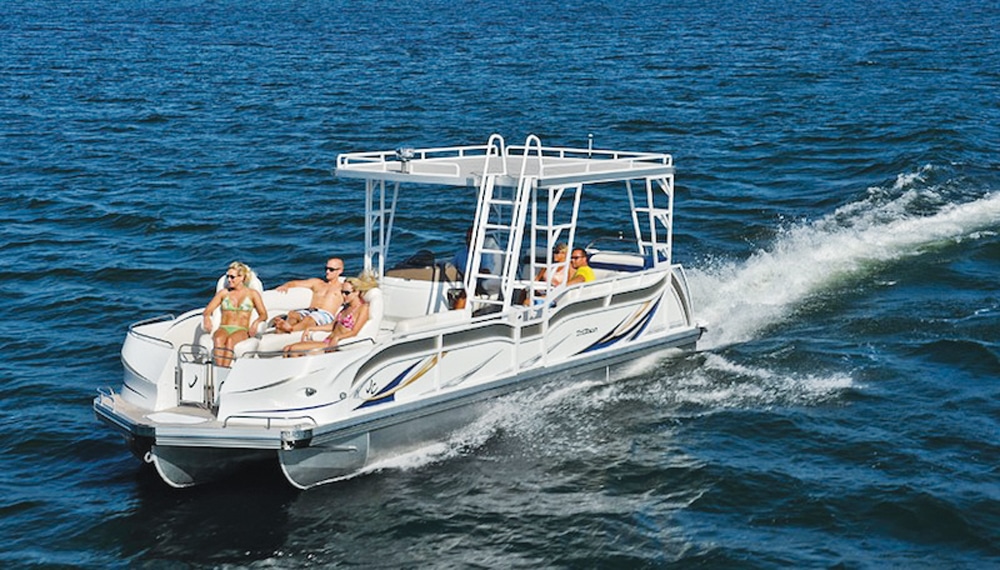
Three Sterndrive Pontoons
JC Pontoons offers a 30-footer with three performance tubes that can be powered by a MerCruiser or Volvo Penta sterndrive to 320 hp. With the maximum horsepower, the boat is capable of 40 mph and can hold a large crew and support big amenities. jcpontoon.com JC Pontoons

